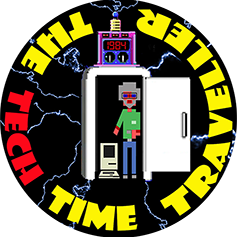What a bummer.
As mentioned previously, the TV Typewriter was a true do-it-yourself project. Literally all you needed to do to get going was order the plans. The plans listed the parts and included the artwork to make your own PCBs. Now, you didn’t have to go quite that far — Radio Electronics did offer some ‘legs up’. They arranged for SWTPC to manufacture the boards in limited quantity. Don Lancaster and his crew also built about 40 or so ‘surplus keyboards’ to be sold to hobbyists who didn’t want to make or hunt down their own.
Obviously I would have loved to have ‘original’ SWTPC-made boards to work with. Would have saved a lot of trouble. But in 2016, these are a little bit hard to come by. In fact, I’d never seen them for sale ever on eBay or anywhere else. And I assumed if I did come across them they’d be assembled already and ridiculously expensive. I didn’t even bother setting up a ‘followed search’ on ebay for them, so convinced I was that they’d never be available.
And that’s okay. The great thing about the TVT is, as I said, it’s entirely legit to make your own boards. And that’s the thing I think that separates this project from say, an Apple I replica. The latter will always be just that much more ‘replica’ because the original boards only came from Steve & Steve.
Anyway, regarding original SWTPC boards, I was wrong on all counts. I don’t know how, but I completely missed an auction on ebay that offered a complete board set, untouched. The price it went for? A heartbreaking $39.00USD. Ugh. The auction has long since passed but I did manage to save some photos before it went offline:
Now, I suppose this is a blessing in disguise – had I managed to steal those boards, I would have faced a moral crisis about trying to assemble them, since there can’t be that many unassembled TVT boards lying around out there. There was also the risk of assembly damage. Evidently the marketplace did not consider these to be incredibly valuable, but for me they would be irreplaceable. Wrecking them would be an offence punishable by flogging.
On the plus side, at least I now had a visual of what ‘original’ TVT boards looked like. Color, texture, size. From talking to Don, SWTPC’s involvement apparently was a while after the prototype debuted, so probably the prototype boards did not have the SWTPC logos. But otherwise looking at photos of the prototype and the alignment of screws, switches, etc, it’s clear the prototype boards basically were the same. Another useful bit of information – the silkscreening on the back looks more or less the same as the ‘parts placement’ templates in the plans:
http://www.swtpc.com/mholley/TV_Typewriter/page_19.pdf
That opens up the possibility that I could use toner transfer or some DIY silkscreening method to take the parts placement diagrams and transfer them to the backs of the PCBs I’m making.
The other interesting thing to note with these is they weren’t tinplated. That kind of had me wondering about their authenticity but after consulting with ‘experts’ it appears these ought to be legit — after all, this was quite early in SWTPC’s adventures in computing.
I’ve got my eBay followed searches better tuned now but I know I’ll never see these again. Oh well, another lesson in not making assumptions!







One thought on “Auuugh! How did I miss these?!”